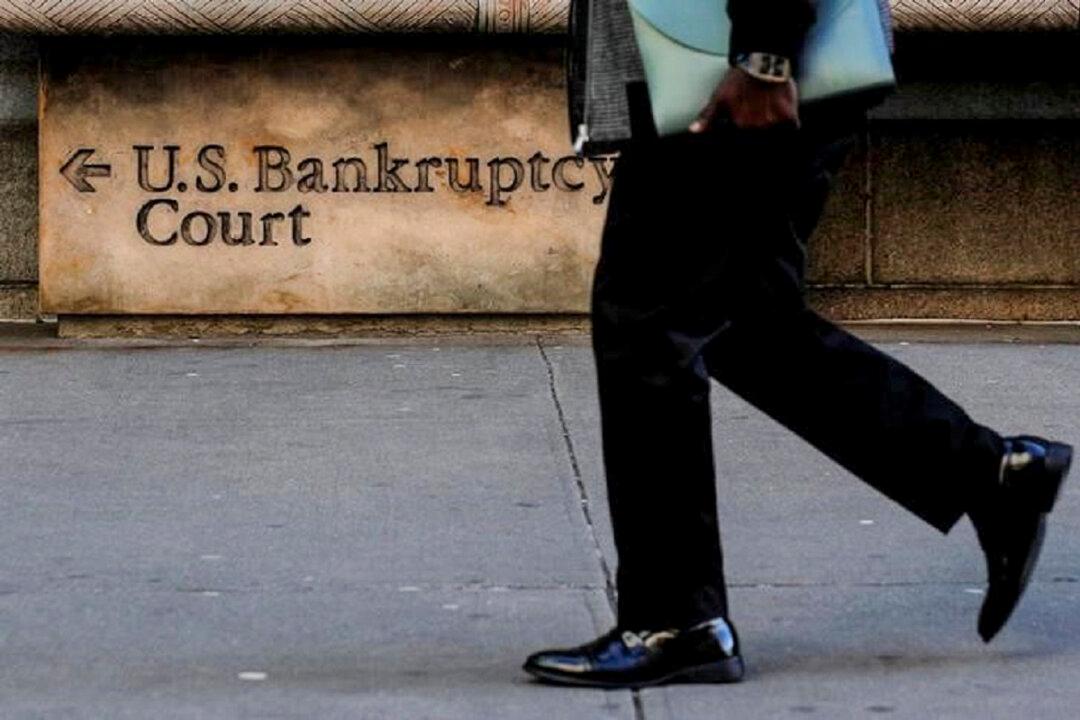More companies filed for Chapter 11 bankruptcy protection in March than a year ago, indicating economic stress among U.S. businesses, according to the American Bankruptcy Institute (ABI).
The 20 percent jump in Chapter 11 filings “signals persistent economic pressure, mirrored by a 10 percent increase in total commercial filings,” said Michael Hunter, vice president of bankruptcy data provider Epiq AACER.
Individual filings jumped 13 percent last month. Hunter said credit card delinquencies are close to a 10-year high, with factors such as interest rates and debt burdens contributing to the problem.
Delinquency rates in the Federal Housing Administration mortgage portfolio have risen to 11 percent, “surpassing pre-pandemic levels,” he said.
“Adding to this, government job layoffs threaten to exacerbate financial instability for federal workers reliant on stable income to service debts.”
“Bankruptcy provides an established process for struggling households and businesses looking to access a financial fresh start,” she said.
In a court filing, chief restructuring officer Jonathan Tibus said the restaurant chain’s operations had been negatively affected by macroeconomic factors over recent years.
“Casual dining restaurants are acutely impacted by consumer sensitivities to eating out versus staying in. And because of inflationary pressures, restaurant menu prices across the industry have risen significantly faster than grocery and other consumer prices,” the court filing said.
Corporate Bankruptcies
U.S. corporate bankruptcies jumped to a 14-year high in 2024, according to a Jan. 7 report from S&P Global. S&P analysis only takes into account bankruptcies involving large businesses with certain asset and liability thresholds.There were 694 such corporate bankruptcies last year, up from 635 in 2023 and 372 in 2022. Some of the well-known bankruptcy filings were made by Tupperware Brands Corp., Party City Holdco Inc., Spirit Airlines, Big Lots Inc., and Steward Health Care System LLC.
The consumer discretionary sector saw the largest number of filings, followed by industrials, healthcare, consumer staples, and information technology.
“Businesses continued to face pressure in 2024 from elevated interest rates, especially as total debt among credit-rated nonfinancial U.S. companies reached a quarterly record of $8.453 trillion and interest coverage remained weak in the third quarter of the year,” the report said.
Just 3 percent of businesses were found to be accurately spotting signs of trouble after analyzing clients’ payment behaviors. The company said this is crucial since sudden shifts in customer payment behavior tend to occur prior to bankruptcy.
Steve Carpenter, Creditsafe’s chief operating officer handling North American operations, said the study highlights the need to give finance teams proper training to tackle the issue.
“It’s not just about why it’s important to regularly review and analyze the historical trade payment data of customers. While that’s very important, it’s also necessary to provide helpful tips and training, so finance teams can accurately identify problematic patterns that are indicative of cash flow issues and an increased likelihood of late payments over time,” he said.
“Otherwise, businesses will continue to miss and misread clear red flags—costing them dearly in terms of the amount of time it takes to chase unpaid invoices and the negative impact it has on the bottom line.”







